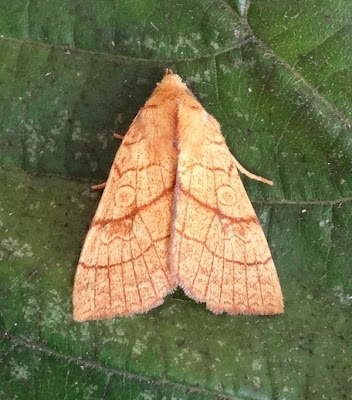Six of us went out to sea in Ray Hempstead's Sorcerer boat on Sunday 29th in search of birds. We headed out from West Mersea early on a nice sunny morning in the hope of seeing some seabirds and maybe some passage of birds flying over the water.
There was very little bird activity despite the fresh easterly winds. We anchored just beyond Colne Point and Ray tried to lure some birds in by tossing some fish scraps into the water. A few herring gulls and great black-backed gulls came in but there didn't seem to be many gulls around. About ten common terns were noted just off from West Mersea and an eider.
Inside the Blackwater a peregrine flew over the boat near Bradwell, another eider and two great crested grebes were the only birds of interest noted in the river. There was more bird activity along the north side of the estuary and alongside Tollesbury and Salcott creeks with brent geese, wigeon, teal, marsh harrier, little egrets and the typical variety of waders too. Around fifty brent geese were feeding in various parts of the muddy creeks with another 30 being seen later in the day near the Monkey Step beach.
Back on dry land a walk along the Strood Channel on Monday 30th provided views of a common buzzard drifting south down the Ray Channel, 300+ redshank, 30 golden plover, 30 wigeon and 25 teal were of interest. Only one swallow was seen near the caravan site while 4 linnets and two pied wagtails were the only small birds seen. Four chiffchaffs were calling from various hedges and a sparrowhawk glided over Firs Chase. Twenty swallows were flying around the Dabchicks area on Friday 27th.
The yellow-legged gull has been seen a few times recently along side the Strood causeway, most recently Saturday.
Three common lizards were seen along the usual path near the Feldy cemetery field.
The fishing lakes by the Strood Hill were surprisingly devoid of waterfowl other than a few moorhens. This large and very hairy fox moth caterpillar was resting on one of the wooden platforms. A silver Y moth was seen during the day while yesterday a hummingbird hawkmoth was seen flying from valerian flowers in Mersea Avenue.
At the country park on Saturday 28th, there was a good number of wigeon in the grazing fields with 450 seemingly a recent influx. No sign of the garganey seen earlier in the week, although 300 teal were mostly sleeping and also 38 greylag geese were busy grazing. Also ten snipe and 10 black-tailed godwits noted.
Sixteen brent geese flew over the Point while another 70 were on the east side of the Colne. Seventy avocets flew off the mud near Langenhoe Point.
Twenty linnets flew around the seawall near the Point and 25 swallows were flying over houses near the Golfhouse.
Two small coppers were seen inside the seawall at the park on Saturday, keeping low down in the fresh breeze. Also on the wing were comma, red admiral, speckled wood and small white.

































